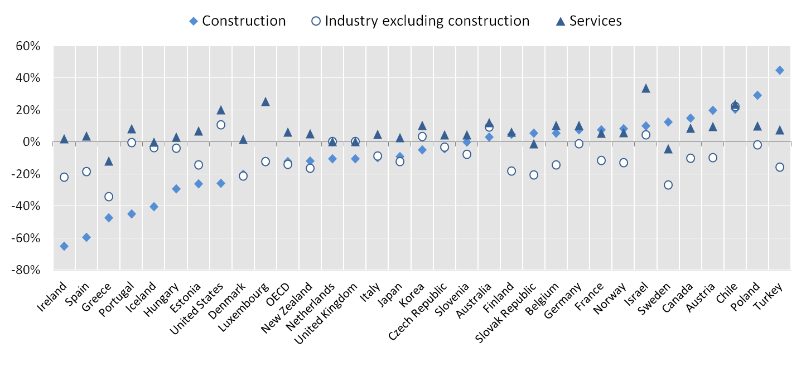Crisis cuts gender jobs gap but everyone loses
The economic crisis has affected men and women differently in the job market. On average in the OECD, female employment rates have held up at 57%, while male employment rates fell from 75.7% in the first quarter of 2007 to 73% in the third quarter of 2012, the gender employment gap got smaller, but not in the way we would have liked.
The narrowing of the gender gap in employment slowed down around 2009 and then partially reversed. Between 2007 and 2009, the heaviest job losses took place in male-dominated sectors, especially construction and manufacturing. Across the OECD, unemployment rates among men rose from 5.5% (2007 quarter2) to around 9% (2009 quarter4). Over the same period of time, unemployment among women rose from 6% to 8% as the services sector – where most women work – was less affected by the crisis. From 2010 onwards, however, unemployment has decreased for men but not for women: by the third quarter of 2012, across the OECD, the unemployment rate was around 8% for both men and women.
The number of people who work part-time but would like to work full-time has also increased since the onset of the crisis, especially among women. Between 2007 and 2011, the proportion of involuntary part-time among workers aged 25 to 54 increased from 0.9% to 1.4% among men but from 3.4% to 4.2% among women, intensifying a trend already started in 2000 when the incidence of involuntary part-time in this group was 2.3%.
Most employment losses are in male-dominated sectors
Change in total employment by broad sector between 2007 and end of 2012, whole population

NOTE: Latest data is: fourth quarter of 2012 for Canada, Chile, Denmark, Israel, Japan, Korea, New Zealand, Norway, Portugal, Spain, Sweden, and the United States; third quarter of 2012 for the other countries.
Related Documents

